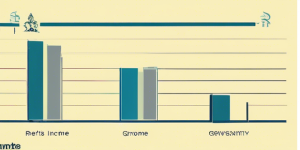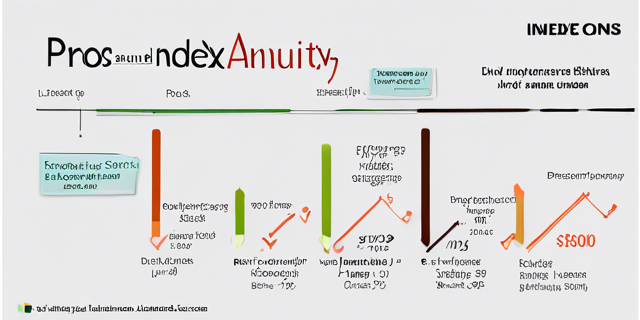REIT Investing for Monthly Income

Real estate investment trusts (REITs) have become increasingly popular investment vehicles for generating monthly income. REITs are companies that own and operate income-producing real estate assets. They provide investors with an easy and accessible way to invest in real estate without having to directly own or manage properties. In exchange for following certain rules around asset holdings, income distribution, leverage, and governance, REITs enjoy favorable tax treatment. In this article, we will explore using REITs to create a consistent monthly income stream.
What are REITs?
REITs were established by Congress in 1960 to provide all investors, especially small investors, access to income-producing real estate. Prior to REITs, only institutions and wealthy individuals could participate in private real estate syndications.
A REIT is essentially a company that uses investor capital to acquire, develop, manage, and sell real estate assets. Most REITs specialize in a particular real estate sector such as apartments, retail centers, office buildings, hotels, storage facilities, data centers, cell phone towers, healthcare facilities, timberland, and more.
Some key features of REITs include:
- REITs trade on major stock exchanges like stocks and provide liquidity for investors.
- They must payout at least 90% of taxable income to shareholders annually in the form of dividends. This results in high dividend yields.
- A diverse group of investors can invest in REITs with minimal starting capital.
- REITs allow investors to gain exposure to real estate without having to directly buy, manage or finance properties.
- They offer portfolio diversification and can reduce overall volatility. Real estate generally performs differently than stocks and bonds over time.
- REITs must adhere to various rules around their asset holdings, revenue sources, amount of leverage, and corporate governance. This provides structure and oversight.
In short, REITs provide a way for individuals to earn income through real estate investment along with the benefits of diversification and professional management. Their substantial dividend payouts can provide investors with consistent monthly income.
REIT Sectors
There are several distinct REIT sectors an investor can choose from. Each sector has its own risk/return profile, dividend yield potential, and sensitivity to economic conditions. Some of the major REIT sectors include:
Residential REITs
Residential REITs own and operate residential rental properties including apartments, manufactured housing, single-family homes, student housing, and senior living facilities. These provide essential housing and generally see stable demand.
Retail REITs
Retail REITs own and manage retail rental properties including malls, shopping centers, outlet malls, and net lease properties leased to retail tenants. Performance is tied to consumer spending and the retail landscape.
Office REITs
Office REITs acquire, own, manage and lease office buildings in various markets. Demand is driven by job growth and business activity.
Industrial REITs
Industrial REITs own distribution warehouses, fulfillment centers, data centers, storage facilities, and flex industrial spaces. Growth in e-commerce has boosted this sector.
Hotel & Resort REITs
As the name implies, these REITs acquire and operate hotels, resorts, casinos, and other hospitality and leisure properties. Tourism and business travel activity drive performance.
Healthcare REITs
Healthcare REITs own medical offices, hospitals, assisted living facilities, life science buildings, and other healthcare-related properties. Demographic trends support demand.
Infrastructure REITs
Infrastructure REITs own assets like cell phone towers, data centers, storage facilities, prisons, highways, airports, and energy infrastructure. Defensive, long-term leased assets.
Mortgage REITs
Mortgage REITs originate or invest in mortgages and mortgage-backed securities rather than owning physical properties like equity REITs. Provides credit exposure.
Specialty REITs
Catch-all sector for REITs that focus on niche property types like farmland, billboards, document storage, casinos, theaters, vineyards, and more.
This wide variety of property sectors allows investors to target specific sectors aligned with their investment goals and macroeconomic views.
Benefits of REITs for Income Investors

REITs have a number of attractive features that make them appealing income investments:
High Dividend Yields
REITs are required to pay out at least 90% of their taxable income annually to shareholders in the form of dividends. The high payout requirement results in above average dividend yields across the various REIT sectors. REIT dividend yields typically range between 2% – 12% and historically average around 5%, significantly higher than the S&P 500 dividend yield.
Reliable Monthly Dividends
Most REITs pay steady and consistent monthly dividends. The recurring dividends produce a predictable income stream investors can count on to meet living expenses. REITs provide monthly “paychecks” from real estate investments.
Diversification
Adding REITs to an investment portfolio provides important diversification benefits. Real estate generally exhibits low correlation to stocks and bonds. REITs can improve portfolio risk-adjusted returns.
Inflation Hedge
REIT dividend growth can provide an inflation hedge over time. As rents and property values rise with inflation, the growing income potential of the underlying real estate allows REITs to consistently increase their dividends.
Low Volatility
REITs have exhibited lower volatility than broader stock market indexes over time. The stable cash flows from commercial real estate tenants contributes to lower price variability.
Liquidity
Since REITs trade on major stock exchanges like stocks, they provide daily liquidity and price transparency investors would not otherwise have in direct real estate ownership. Investors can move in and out of REITs as needed.
Professional Management
REITs are professionally managed by experienced real estate management teams with far greater resources, experience, and expertise than individual investors. They handle all aspects of operations, freeing investors from landlord duties.
Low Minimums
Unlike direct real estate investing, REITs allow investors to gain diversified real estate exposure with minimal capital. Investors can purchase REIT shares on brokerage platforms starting with one share.
Constructing a REIT Income Portfolio

Once an investor decides to utilize REITs for monthly income, how should they construct their REIT portfolio? There are a few principles to keep in mind:
Diversify Broadly
A common mistake is to invest in just 1 or 2 REITs. Concentrating too much in any single REIT subjects investors to idiosyncratic risk. REITs should be combined as part of a diversified portfolio. Invest across multiple REIT sectors and individual companies.
Divide Between Sectors Strategically
Investors can overweight REIT sectors they are more bullish on and underweight or avoid those with less favorable outlooks. Spreading investment dollars across different property types adds broader diversification.
Manage Risks
Balance higher yielding but higher risk REITs with lower yielding but higher quality REITs. Factor in economic sensitivity, management team, balance sheet, dividend safety, and other risks for each REIT.
Income Focus
Keep a strong focus on the dividend income potential of REITs held in the portfolio. Favor REITs with safe, growing dividends supported by stable cash flows. But don’t chase ultra-high yields which can signal risk.
Long-term Approach
Given REITs distribute most of their cash flow in dividends, investors should take a long-term approach. Don’t buy and sell REITs too frequently. Allow dividends to compound over multi-year periods.
Passive Options
For investors that don’t want to pick individual REITs, allocating to a REIT ETF provides cheap exposure to the broad REIT industry. Some options are VNQ, SCHH, IYR.
By applying these portfolio construction principles, investors can build a low-cost, diversified REIT portfolio that maximizes their monthly dividend income.
Where to Buy REITs
Once an investor has decided to invest in REITs, what are the options for purchasing them?
Stock Brokerage Account
The most straightforward option is to buy shares of individual REITs or REIT ETFs through a general stock brokerage account such as one at Fidelity, Vanguard, Schwab, or many other online brokerages. Investors can construct their own customized REIT portfolio.
REIT Mutual Funds
Mutual funds focused exclusively on investing in REITs provide professional management and instant diversification. These funds are offered by various investment companies like Vanguard, Fidelity, Cohen & Steers, and Nuveen. Minimum investments and fees vary across funds.
REIT Closed-end Funds
Closed-end funds are professionally managed portfolios of REITs offered as an IPO and then trade like stocks on exchanges. They use leverage which can boost income but adds risk. Discounts/premiums to NAV fluctuate over time. Examples are RQI, RNP, and NRO.
REIT Unit Investment Trusts (UITs)
UITs are fixed pools of REITs that remain largely static over their defined lifetime, ranging from 15 months to 4 years. Popular REIT UIT sponsors include Hennion & Walsh and SmartTrust. UITs have syndicate costs but no ongoing management fees.
REIT Stocks Directly
Some private and startup REITs will sell shares of their stock directly through their own broker-dealers instead of listing on a public exchange, but this is less common. Fees can be high and liquidity is low in direct REIT offerings.
REIT Roboadvisors
A newer option is REIT roboladvisors like Fundrise and RealtyMogul that construct and manage REIT portfolios for investors using proprietary scoring algorithms. Minimums can be low but fees stack up.
Top Factors for Analyzing REITs
Once an investor has decided to build their own customized REIT portfolio, how should they analyze and select individual REITs for investment? Here are some of the most important factors:
Property Sector & Markets
- What property sector and geographic markets does the REIT’s portfolio occupy? Are they positioned in attractive, growing real estate sectors and cities?
Management Team
- Does the management team have extensive real estate experience and a strong track record? Look for experience across market cycles.
Balance Sheet & Cash Flows
- REITs should have reasonably leveraged, flexible balance sheets. Look at metrics like debt/EBITDA, interest coverage ratios, debt maturity schedules.
Occupancy Rates
- Occupancy rates are an important gauge of lease demand. High occupancies provide stable cash flow to fund dividends.
Tenant Base
- Review top tenants, their credit quality, industry, and percent of revenue they provide. Larger, higher quality tenants are ideal.
FFO Payout Ratio
- The FFO (funds from operations) payout ratio shows how much FFO is paid in dividends. Lower ratios (~60-80%) offer more cushion.
Dividend Yield
- Current dividend yield, historical yields, and dividend growth rate. Strong, stable yields are preferable but avoid excessively high yields which may signal risk.
Valuation Multiples
- Look at EV/EBITDA, P/FFO relative to historical averages. REITs trading at larger discounts likely have higher return potential.
Evaluating REITs across these financial, operational, and valuation factors allows discerning strong opportunities with improving fundamentals versus weak, distressed REITs to avoid.
Advantages of Individual REITs vs. REIT ETFs
For REIT investors, is it better to select your own individual REITs or simply invest in a diversified REIT ETF? There are good arguments on both sides.
Individual REIT Advantages
- Allows customizing your portfolio to match your specific sector and geographic preferences
- Able to fully analyze each REIT and pick only the best opportunities
- Gain higher income by selectively overweighting higher yielding REITs
- Diversify across a larger number of REITs than typically held in ETFs
REIT ETF Advantages
- Provides instant diversification across large number of REITs and sectors
- Lower cost than individually buying and rebalancing multiple REITs
- Passive investing removes emotion and need to constantly pick REITs
- Automatically rebalances holdings and reinvests dividends over time
There is no right or wrong approach. Investors wanting more customization and larger income may favor individual REITs, while more passive investors can achieve effective diversification through a REIT ETF. Many investors use a mix of both in their portfolio.
How to Evaluate REIT ETFs
While investing in individual REITs provides more customization and control, utilizing one or more REIT ETFs can be a lower cost, diversified option for gaining exposure to the overall REIT industry.
But how should investors evaluate the growing number of REIT ETF choices available? Here are key factors to consider:
- Assets Under Management – Prefer larger ETFs with more assets which tend to have greater liquidity and lower bid/ask spreads.
- Number of Holdings – More REIT holdings provide broader exposure and diversification across the REIT sectors.
- Dividend Yield – Look for ETFs with higher 12-month dividend yields for maximum income.
- Expense Ratio – Lower expense ratios mean more of your investment goes to dividends instead of fees.
- Premium/Discount to NAV – Historically large average premiums or discounts could lead to returns diverging from the underlying REITs held.
- Index Tracked – Review index methodology and holdings focus to ensure alignment with your sector preferences and return objectives.
Comparing REIT ETFs like VNQ, IYR, and SCHH across these criteria can identify attractive options for passive REIT investing.
Taxes on REIT Dividends
A significant advantage REITs have historically offered is preferential tax treatment. But recent tax law changes have reduced some of the tax benefits.
Under previous tax law, REIT dividends were not considered “qualified” dividends and taxed as ordinary income. But investors could deduct 20% of their REIT dividends directly from their taxable income calculation. This provided a favorable after-tax yield for investors in higher brackets.
However, since 2018 individual tax reform capped the deduction for qualified business income at 20%. This effectively eliminated the tax deduction previously available for REIT dividends. Now most investors must pay taxes on 100% of REIT dividends at their ordinary income rate (up to 37%).
However, investors can still defer REIT capital gains taxes by holding shares until death and getting a step-up in basis. Additionally, REIT dividends received through a 401(k) or IRA will continue growing tax-deferred. But the inability to directly deduct REIT dividends increases the effective tax rate compared to prior law.
Investors should factor the increased tax headwind into their expected after-tax returns from REITs. Holding REITs in tax-advantaged accounts mitigates this issue.
Creating a Diversified Monthly Income Portfolio
While REITs can provide stable monthly cash flow, experts recommend allocating only a portion of your overall portfolio to REITs as part of a diversified income strategy.
REITs can fit nicely into a broader income portfolio along with:
- Bonds – Government and corporate bonds provide safe income and conserve capital. Limit interest rate sensitivity with shorter duration.
- Dividend Stocks – Select dividend stocks with safe payout ratios, long histories of consecutive dividend growth. blue chips preferred.
- Preferred Shares – Preferred stocks have fixed dividend payments and higher income than bonds. Focus on rate-reset preferreds.
- Peer Lending – Earn interest income through online peer lending platforms like LendingClub by investing in fractions of loans. Provides high yields from credit exposure.
- Annuities – Income annuities and deferred income annuities (DIAs) offer guaranteed lifetime income in retirement. Useful to cover essential spending needs.
Allocating across these varied income sources diversifies cash flow streams and can provide stability to monthly income from market volatility. Pairing REITs with other complementary income assets allows crafting a portfolio aligned with your cash flow needs and risk tolerance.
Conclusion
REITs can be an excellent vehicle for investors looking to generate consistent monthly dividend income. By investing in REITs across the various property sectors, investors gain diversified exposure to commercial real estate and the potential for strong cash flow. Evaluating factors like management, cash flow, valuation, dividend safety, and debt allows discerning the most attractive REITs poised to deliver growing income over time. Constructing a diversified REIT portfolio and pairing it alongside other income-generating assets can produce steady monthly cash flow while moderating risk. REITs remain a robust income option in today’s low yield world based on their diversification benefits, inflation-hedging ability, non-cyclical dividends, and consistent cash distributions. For investors needing to fund living expenses in retirement or seeking an alternative income stream, REITs can play an important role in providing reliable monthly cash flow.
Frequently Asked Questions
What is the best REIT to invest in for monthly income?
There is no singular “best” REIT for every investor. But some well-known blue chip REITs with safe dividends to research include Realty Income (O), Federal Realty (FRT), Prologis (PLD), Digital Realty (DLR), and Equinix (EQIX).
How much monthly income can I earn per $100K invested in REITs?
At an average REIT dividend yield of 4%, $100,000 invested across a diversified group of REITs could generate approximately $333 in monthly dividend income ($4,000 annually). Actual income varies based on specific REIT dividend yields.
Are REIT dividends qualified dividends?
No, REIT dividends are not considered qualified dividends. They are taxed as ordinary income and ineligible for the lower long-term capital gains rates. However, up to 20% of REIT dividends were deductible directly from taxable income until the 2017 tax reform.
How do REIT ETFs compare to owning REITs directly?
REIT ETFs provide instant diversification across many REITs in a low-cost, passive package. But investors sacrifice control over individual REIT selection and potential customization of their real estate exposure. Many investors use a combination of direct REIT ownership plus REIT ETFs.
What is the difference between equity REITs and mortgage REITs?
Equity REITs own and operate income-producing real estate assets. Mortgage REITs originate loans or invest in mortgages and mortgage-backed securities. Equity REITs derive income from property rents while mortgage REITs earn income on net interest margins.
How do I choose between REIT sectors like residential, retail, office, industrial, etc?
Weigh your outlook for property fundamentals, demand dynamics, and valuation for each sector. For example, aging demographics may favor residential while e-commerce favors industrial. Consider targeting a mix of both defensive and opportunistic sectors.
Should I buy REITs through a retirement account?
Owning REITs in a Roth IRA, traditional IRA, or other tax-advantaged account can maximize returns by allowing dividends to compound tax-free over long periods. This avoids current ordinary income taxes on distributions









